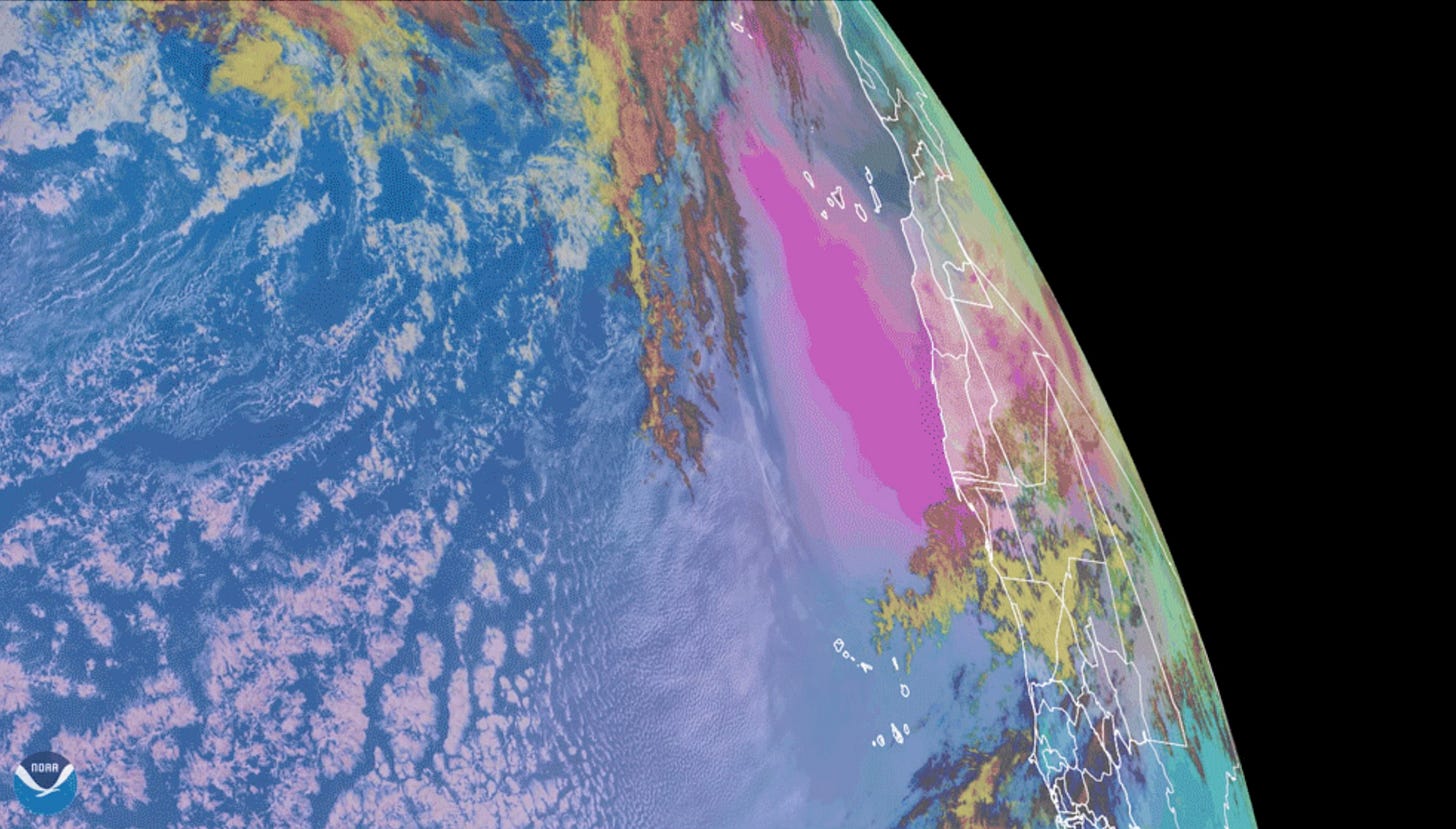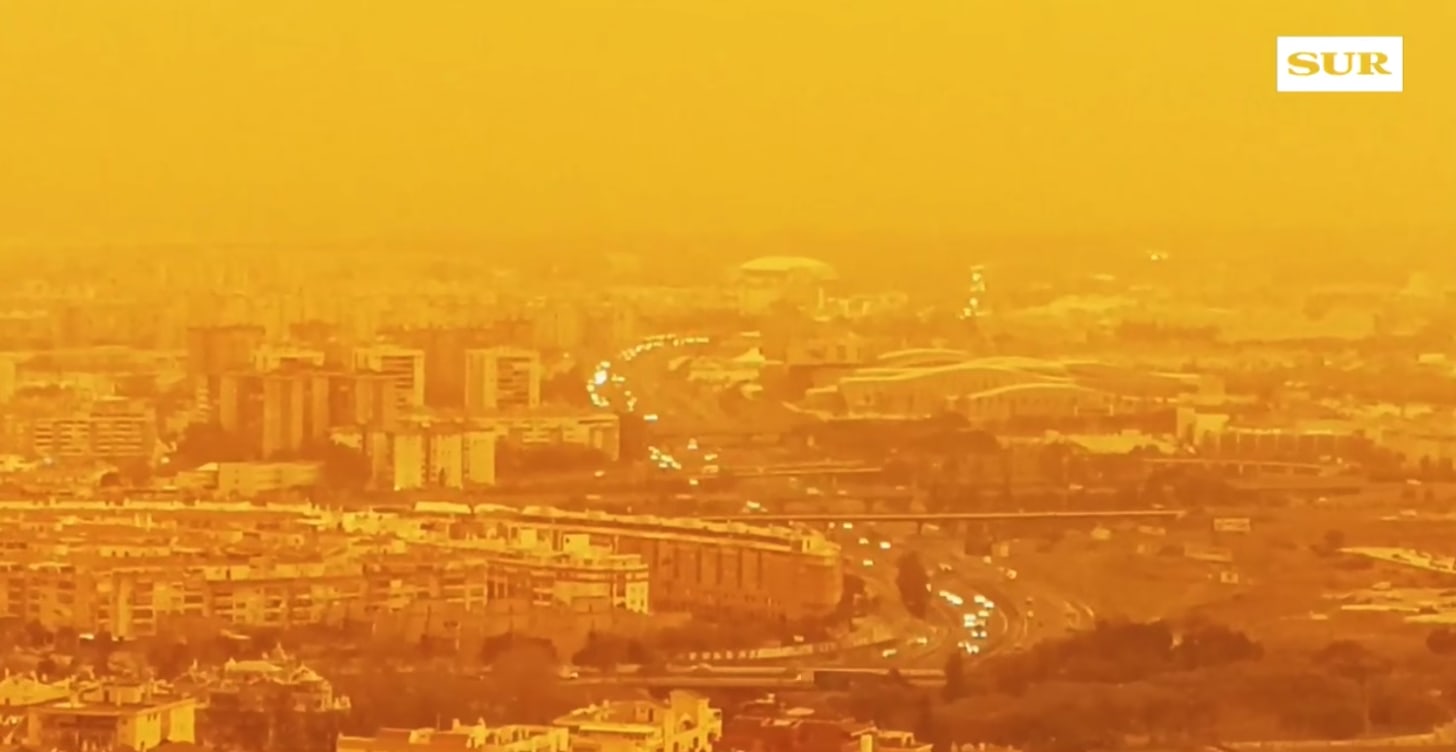I must admit I didn’t know anything about Saharan dust storms before moving to Portugal. I only really became aware of them the first spring we lived in VRSA. I recently woke to find our white car covered in a thick layer of red-brown-orange dust.1 From our front window I watched as a tourist snapped a photo of our car. (Unfortunately, I did not.)

Saharan Dust Storms
It was March 2022 when I first recall experiencing a Saharan Dust Storm. We were visiting the Castle in Castro Marim, and I took a video and photos for a blog post. Several readers asked what kind of filter I had used to impose the rusty haze on the photos. I hadn’t used any photo-magic …

I did some research and learned that these events occur when the surface of the Sahara Desert is lifted and transported across the Atlantic Ocean. While such events can happen anytime between March and October, we have always seen the effects in March. Areas nearby like Portugal and Spain can feel the effects, but it doesn’t stop there. The UK has been impacted as have areas of North and South America. The Spanish call these events “calima”, and an article in an English-language Spanish paper recently worried that this year’s calima might impact Easter holiday celebrations:

The weather forecast brings some concerning news to the Andalucía region of southern Spain this week. With Easter just around the corner, the next few days will be marked with the arrival of strong 'calima' haze of Saharan desert sand from North Africa and the formation of a Dana (high-level depression at a high altitude) in the southwest of the Spanish mainland that could bring rain in the middle of the week. —SUR
The Saharan dust can cause respiratory problems for children, the elderly, and those with underlying conditions. These folks should stay indoors whenever possible when the dust is present. It also impacts visibility and can impact weather conditions. Following the “storm”, it is customary to have a few days of rain. (Great…at least our car is kind of white again.)
Annoying Yet Beneficial
If you are a long-time reader you know that I am just a bit of a clean freak. The morning after the first day of the storm (21 March) I spent 3 hours hosing off our rooftop. I spent another 2 hours on the 23rd, as we have our outdoor furniture scheduled for delivery on the 27th. The photo above was taken this morning (25 March) following yesterday’s rain. (Note: I washed all the windows, doors, and sills yesterday morning. While I know we will likely have more rain over the next few days, I will be compelled to clean them again as soon as I finish this post.) So yes, even if you don’t have a respiratory condition these storms are annoying.
However, good ol’ Mother Nature always offers some benefits as well. In addition to some breathtaking sunrises and sunsets, these storms transport nutrients to the oceans and fertilize farmlands. We recently planted three large raised beds of vegetables on our rooftop…perhaps we will have a banner crop.
O tempo dirá, na próxima semana falo-vos de Maiorca, tchau
Nanc

Please note: due to our travel plans this post was written on 25 March 2024.





I live on the Silver Coast, and we received quite a bit of Sahara dust. My car was completely covered in red dust. Glad to know there are some benefits to this dust. Our local expat group posted this: "Portugal will get its revenge. After having its atmosphere filled with Sahara dust, Portugal will now fill the skies over North Africa with smoke from grilled sardines".
Thanks for your weekly update. The Sahara dust has always ascended on us here in the Algarve over the years. My concern is the water shortage & the use of this valuable resource to wash it away. 🔆